
Born 1959 in Brazil, IN. Lives in Chicago, IL.
(SHE/HER/HERS)
Judy Ledgerwood is a painter whose canvases and installations confront the history of abstract painting. Her work considers domestically created work made by women across many cultures and frequently incorporates motifs derived from symbolic shapes associated with Paleo and Neolithic Goddess cultures throughout Europe. The broader vocabulary of shapes consists of circles, quatrefoils, and seed-like shapes organized within triangles and chevrons that she perceives as a ciphers symbolic of feminine power.
Judy Ledgerwood received a BFA from the Art Academy of Cincinnati and an MFA from the School of the Art Institute of Chicago. Ledgerwood has held numerous solo exhibitions at The Graham Foundation (Chicago, IL), the Smart Museum of Art (Chicago, IL), The Art Institute of Chicago (Chicago, IL), Hausler Contemporary (Zurich, Switzerland), and Rhona Hoffman Gallery (Chicago, IL). She has participated in notable group exhibitions including: 50 Paintings at the Milwaukee Art Museum (Milwaukee, WI), The Thread Is Not Straight at Denny Dimin Gallery (Hong Kong), Duro Olowu: Seeing Chicago at the Museum of Contemporary Art (Chicago, IL), 20/20: Twenty Women Artists of the Twentieth Century at the David Owsley Museum of Art, Ball State University (Muncie, IN), Interwoven: Joan Snyder, Judy Ledgerwood, Crystal Gregory at the University of Kentucky Art Museum (Lexington, KY), Surface/Depth at the Museum of Arts and Design (New York, NY), and Fringe at Denny Dimin Gallery (New York, NY) among others. In 2015, Ledgerwood was commissioned by the United States Embassy in Vientiane, Laos to create a site-specific painting.
Judy Ledgerwood is included in prestigious public collections including The Art Institute of Chicago (Chicago, IL), The Metropolitan Museum of Art (New York, NY), the Museum of Contemporary Art Los Angeles (Los Angeles, CA), the Milwaukee Museum of Art (Milwaukee, WI), the Museum of Contemporary Art Chicago (Chicago, IL), and the Kunstmuseum St. Gallen (Switzerland) among others. Her work has been written about in publications such as Artforum, Hyperallergic, The New Yorker, Brooklyn Rail, Art in America, and The New York Times among others. Judy Ledgerwood is represented by Denny Gallery (New York) and Rhona Hoffman Gallery (Chicago).
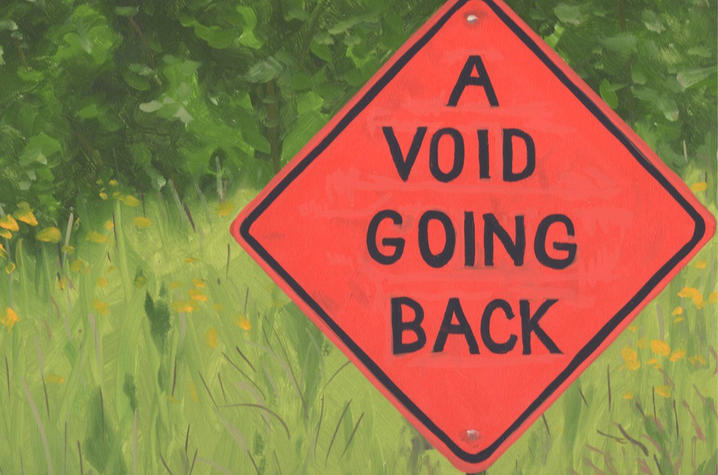
The University of Kentucky Art Museum has received a grant from the Terra Foundation for American Art in support of its exhibition/publication, “Disguise the Limit: John Yau’s Collaborations.”
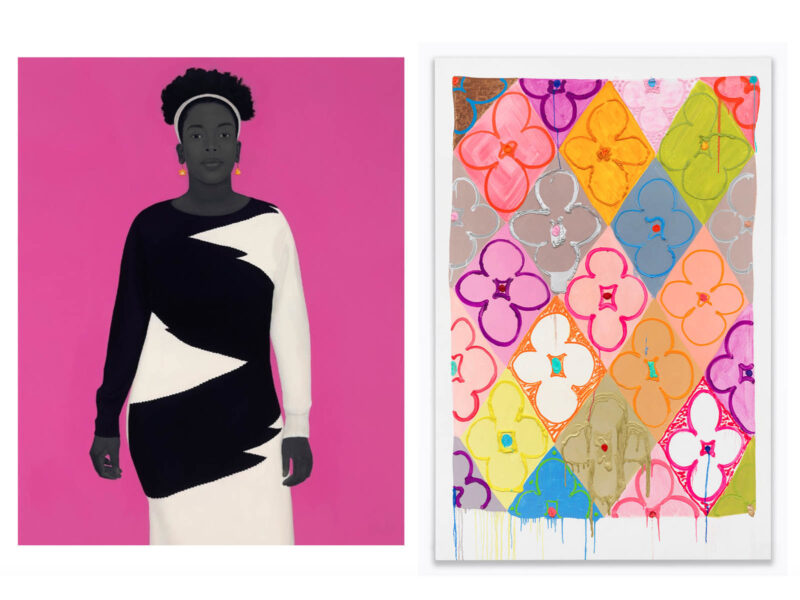
Milwaukee Art Museum will show ‘Art, Life, Legacy: Northern European Paintings in the Collection of Isabel and Alfred Bader,’ which opens Sept. 29, and ’50 Paintings,’ a survey of work by 50 contemporary painters, starting Nov. 17.

What distinguishes Ledgerwood’s work from the earlier generation of women artists working in the domain of Pattern and Decoration is its bluntness and humor.

One or two paintings in the show echo its sole sculpture with impasto oil enthusiastically accenting the picture plane. Still more command physicality by mimicking tapestry — clever white gaps at the top create a rudimentary trompe l’oeil where flat works look like hanging cloths.
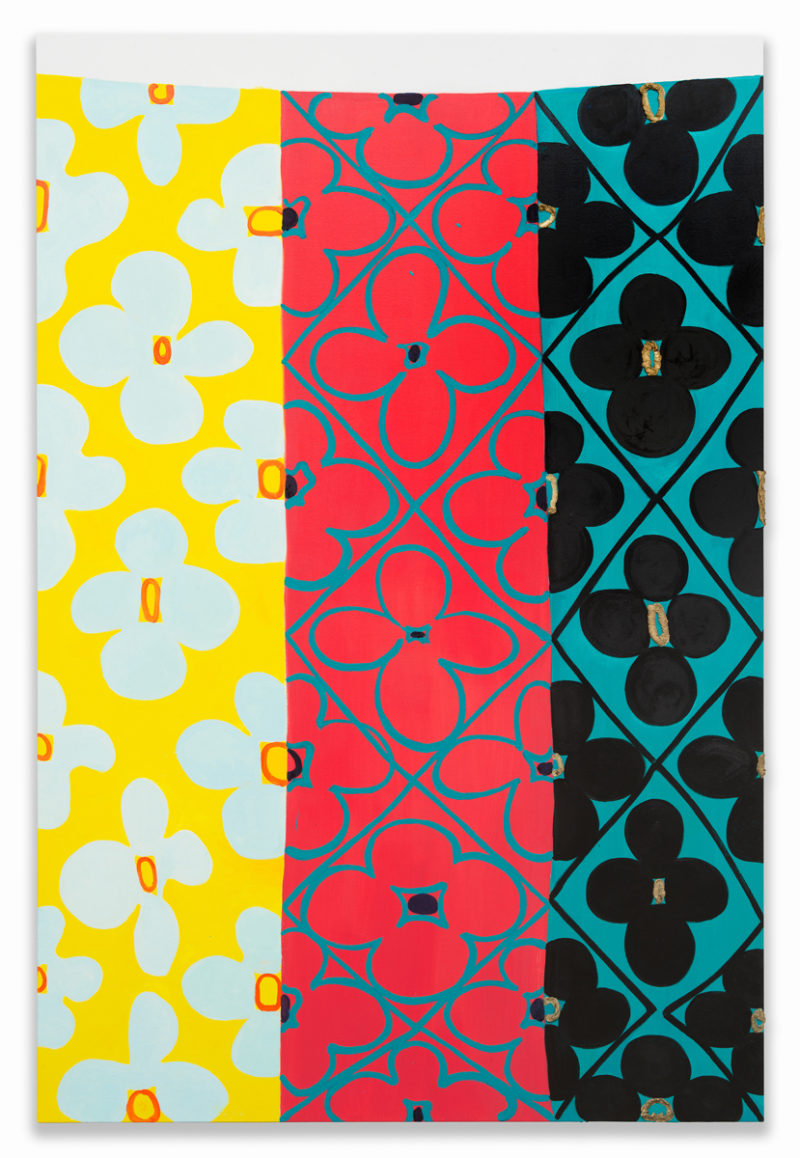
In Judy Ledgerwood’s exhibition Sunny, the artist has bold intentions. She began working on the paintings last January when she was searching for color during many gray days.
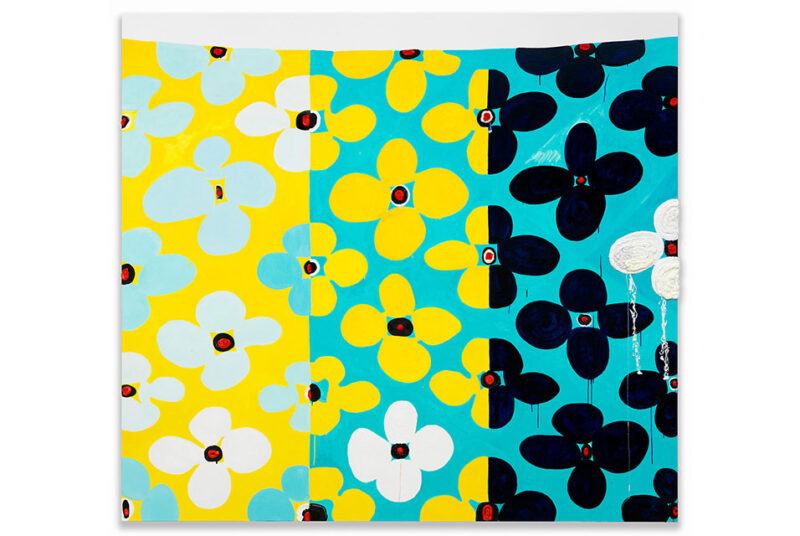
Denny Gallery recently opened ‘Sunny’, a solo exhibition of new work by painter Judy Ledgerwood. On view at the gallery’s New York location since January 7, it will continue to February 11, 2023.
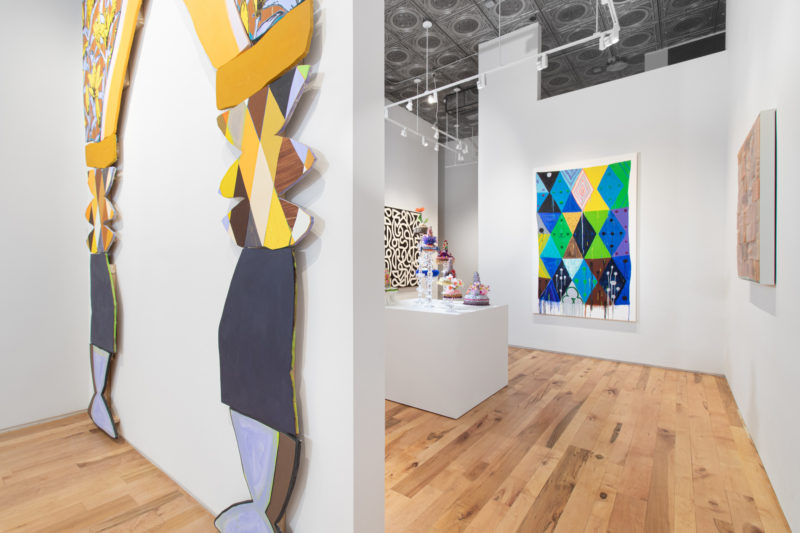
As the city reopened, the art world saw legacy-changing donations for the Met and the Brooklyn Museum, and a seismic shift in Tribeca’s gallery scene.
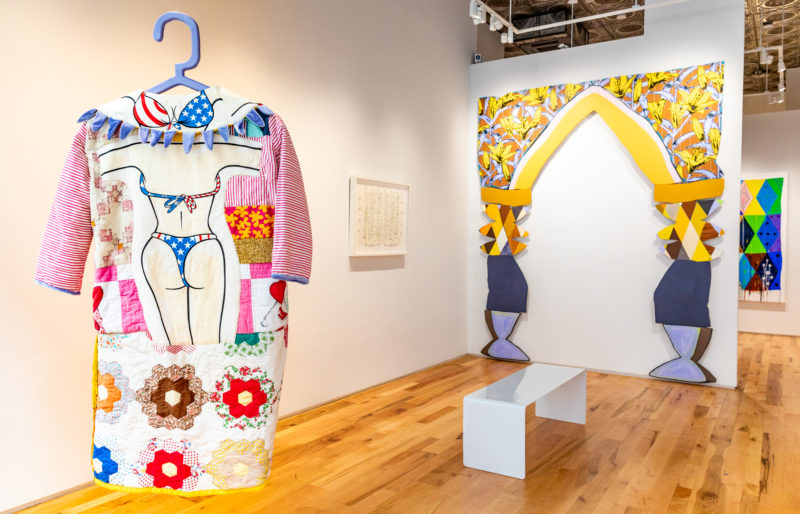
A more intimate and entirely irresistible group show—cleverly titled “Fringe”—is on view at the Denny Dimin gallery through Aug. 20.
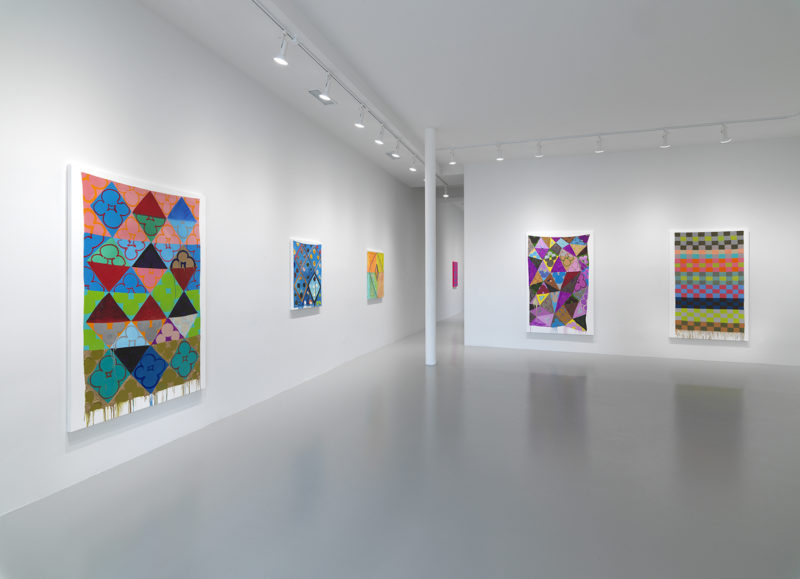
Judy Ledgerwood discusses her exhibition Far From the Tree in the context of the 40th anniversary of the Pattern and Decoration movement.
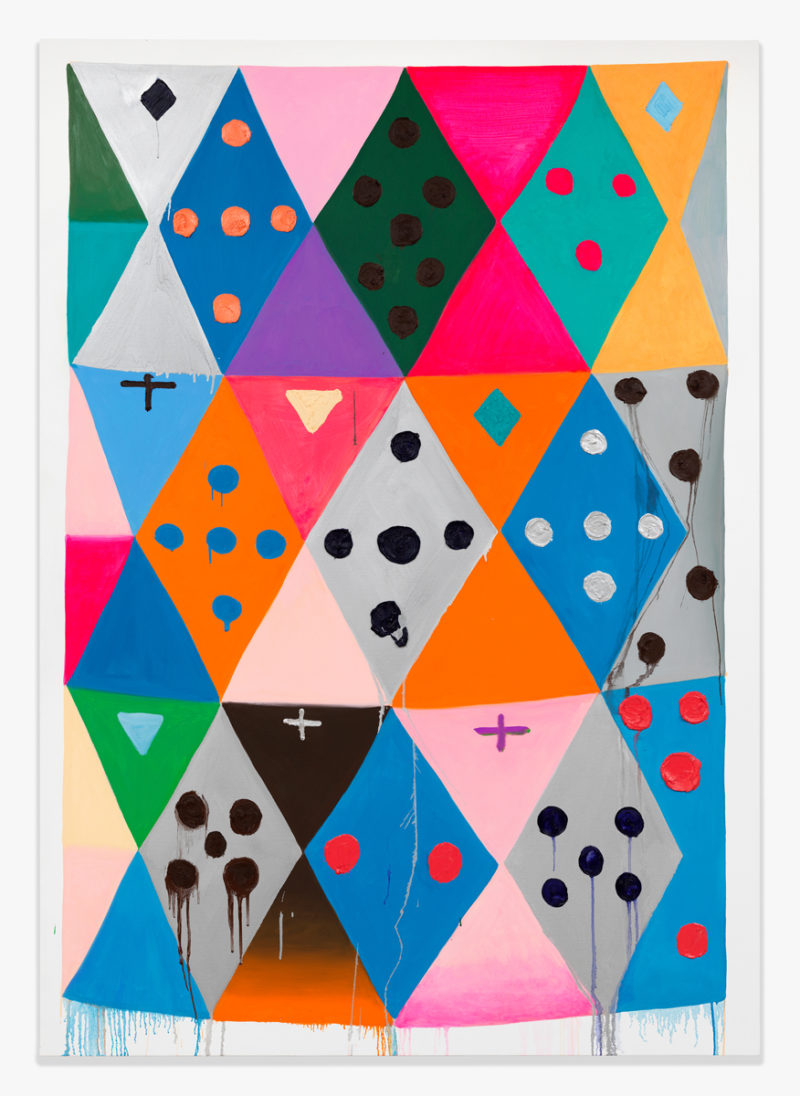
Judy Ledgerwood Reviewed n New York Times
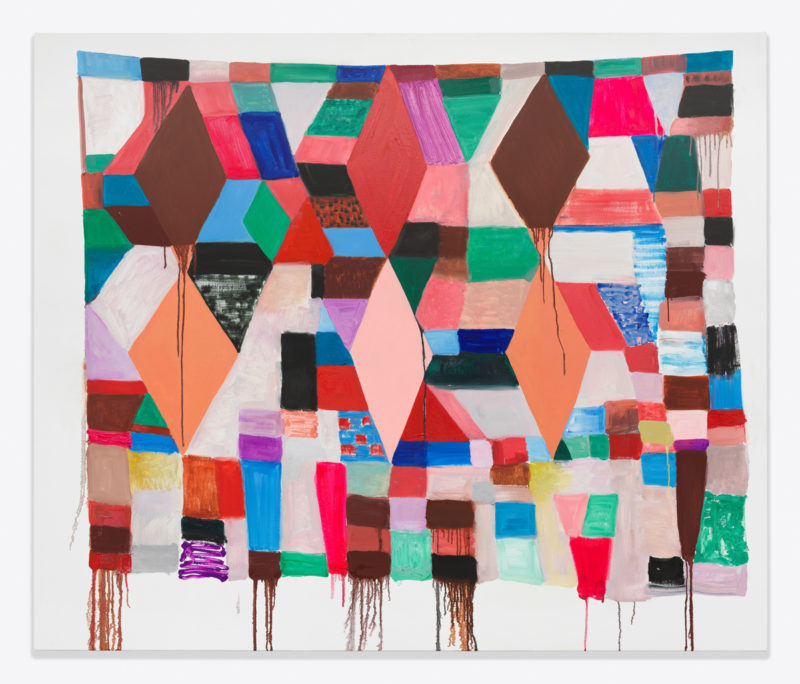
In Judy Ledgerwood’s paintings the viewer encounters elements of humor, instances of surprise, celebrations of female sexuality, forms of vulgar tactility, and intense and unpredictable combinations of color.
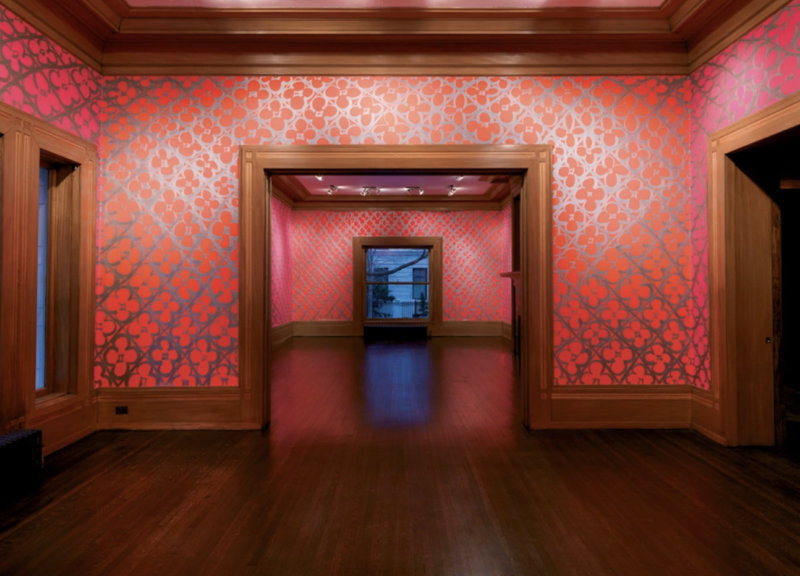
Jumping across historical periods and registering time in the form of its passing effects, Ledgerwood conjured an alluringly immersive, sensorial experience, and took a giant step away from her more typical engagement with the white-box gallery.